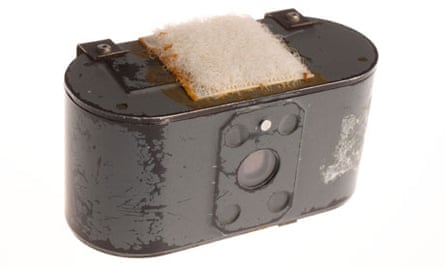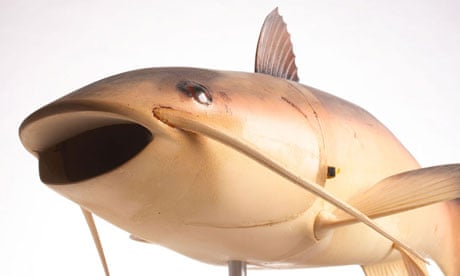A remote controlled dragonfly, a stomach-mounted drill and a camera designed to reduce documents to the size of a full stop. The contents of the CIA museum in Langley, Virginia (home to the CIA headquarters) make fascinatingly odd exhibits, not least because until very recently no one had actually been allowed to see them. The museum is closed to the public, but earlier this month, a selection of its daftest treasures went on display on the agency's Flickr page. Here are some of our favourite devices:
Robot fish 'Charlie'
This Unmanned Underwater Vehicle (UUV) was never created to spy directly but used, according to the museum's less-than-helpful captioning, to study "aquatic robot technology". Powered by a propulsion system in its tail, Charlie's controller uses a "wireless line-of-sight radio handset" to steer him. Which sounds like it means they'd need to be in the water themselves anyway. The more I look at this one, the more I'm convinced it's actually just a child's toy.
The pigeon camera
Created by the CIA's Office of Research and Development, this tiny camera was light enough for a pigeon to carry in flight, providing detailed aerial photos of its targets. Training the pigeons was vital. On their first few flights, most birds would return with a film full of soft-focus, black-and-white shots of them and their mates pouting and holding cigarettes.

The modified ladies makeup compact concealment device
A mirror that, when looked at from a certain angle, reveals a top secret code. Which raises some questions: Why didn't spies just learn the codes? Did they really need to revise the codes while doing their makeup? What happened when they had to lend it to a friend who had an eyelash in their eye? Anticipating these queries, the caption helpfully explains: "A code is a system of communication in which symbols represent words."
Seismic intruder detection devices
Cunningly disguised as a stick and a stone that looks like a tiny roast chicken, these are actually sophisticated cold war-era detection devices, capable of alerting their user to the movement of people, animals or objects up to 300 metres away, granting operatives vital seconds to ready themselves for a life-threatening encounter. The stick, or possibly the chicken, relays this information to the user via "coded impulses", a phrase too secret to be explained.
